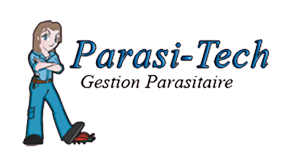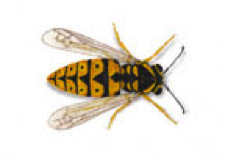Our affiliates






Our goal is to solve your pest problems with professionalism and use the best techniques to not leave residue and maintain a clean environment in your homes.
View coupons.

• Wide , up to 1.8 inches long..
• The wings are orange-red .
• Orange abdomen with brown stripes.
• Nests are found during the spring.
• Most die in late autumn.
• Only the fertilized queens overwinter .
• Nesting – In sheltered places , eg tree trunks, bushes, sides of buildings , barns, attics, hollow walls. Their nests are gray and paper-like .
• A colony can reach a size of 700 workers.
• Only spades when provoked . Their stings are painful to humans. They can bite and sting at the same time . They can mobilize the entire nest to sting in defense which is very dangerous for humans.
• Food – Live insects and sap. Are not attracted by human food.

• 3/4 – 1 inch long .
• Female faces are black, male faces are yellow.
• Bright yellow , orange or white hairs on the thorax.
• No hair on the belly.
• Women have a stinger , men have no sting.
• Tunnel into wood to lay eggs.
• The life cycle from egg – larva – pupa – adult takes approximately seven weeks.
• Larva is large and noisy.
• New adults emerge from the nest late August
• Only sting if provoked .
• Visibility – late spring to mid-October .
• Nesting – the untreated softwoods are preferred, including redwood, cedar, cypress and pine . Old nests are used year after year.
• Location – Nests can be found in – between roofs, windows , trim, fascia , siding , decks and outdoor furniture .
• Power – flowers that contain pollen, eg Bradfords , daffodils , pansies . Pollen stored in abandoned tunnels for overwintering .

• Worker – 1/2 inch long .
• Queen – 3/4 inch long.
• A mix of black and yellow stripes .
• Two pairs of wings .
• Size narrow .
• Sting like a sword.
• Annual Colonies .
• The queen begins nesting in the spring.
• Very aggressive at the end of the summer.
• Colonies began to decline in the autumn.
• Only inseminated queens hibernate.
• Food – at certain times of the year they feed on insects , including caterpillars / pest flies , as colonies grow, they are attracted to foods consumed by humans.
• They bite repeatedly , they bite if provoked only. Symptoms range from swelling in allergic shock which is life threatening.
• Visibility – visible during the day because they do not see well at night .
• Nesting – in the trees / shrubs , or indoors in attics, hollow walls / flooring , sheds, under porches / between – roof buildings.

• Black and yellow abdomen .
• Workers ( sterile females ) appear in early summer and take over nest building . The Queen continues to ponder eggs.
• New queens and males mate in early fall .
• Nest dies during winter, including all the males and workers . Only the queens survive the next year.
• Preferred nest sites – lofts, wall cavities , old rodent burrows , hollow trees and bushes
• Nest construction – treated wood ( paper ) . Combes placed horizontally . A new nest is produced each year.
• Power – insects and sweet food.
• bite easily and often.